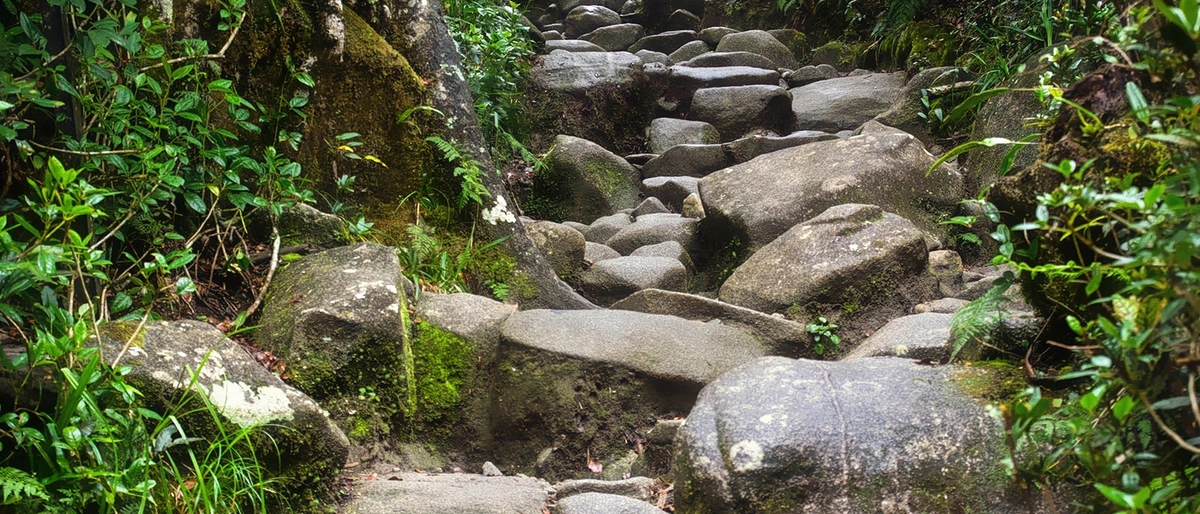One of Malaysia’s truly stunning natural landscapes, Kinabalu National Park is also a UNESCO World Heritage site. The peak itself is the centerpiece, sacred to locals and a challenge for hikers, who regularly climb to the 13,400 feet summit.
Located in Sarawak on Malaysian Borneo, Mount Kinabalu has all of the usual flora and fauna including carnivorous plants and hundreds of bird species. There are 1,000 distinct species of orchid in the park as well as the enormous rafflesia blossom, the globe’s largest flower.
The park’s UNESCO justification comes from its quickly changing elevation. Hikers pass through more than 12,000 feet of elevation in just a few hours, and the landscape varies dramatically along the way. You’ll need to hire a guide if you want to climb the peak.
The good news for visitors is that the climb is relatively easy. It is a rousing day of exercise to be sure, but has more in common with climbing stairs than scaling mountains. Look around on the summit and you’ll see toddlers and senior citizens, all of whom came without cars.
Along the trail is the Laban Rata Guesthouse (among other establishments), making it possible to break the climb up into two days. The advantage is that you can near the peak in the first day, then rise early in the morning and arrive at the summit just in time for the sunrise. By midmorning the view is obscured by clouds.
Other activities are catered for here. Rock climbing is possible on dozens of granite faces throughout the park, and local travel agents have the equipment and know-how you’ll need. Poring’s hot springs are touted as ideal places to soak sore muscles after two days of climbing.
Look out for the park’s amazing fauna as you trek across the landscape. Pygmy squirrels and fruit bats are easy enough to spot but you’ll need a guide if you want to spot the more elusive black shrews, rhinoceros hornbills and orangutans.
Aside from climbing the peak, visitors can drive to Mesilau, taking in the terraced hill slopes and their vegetable plantations and farms along the way. Upon reaching Mesilau, take the time to admire the plants and shrubs that thrive here or challenge yourself to more exercise along the Mesilau Summit Trail, popular with bird-watchers.
Poring is another popular destination in the park with its hot springs and close by vegetable and flower farms. Facilities are good at the headquarters here and include a butterfly centre, an orchid conservation amenity, accommodation, picnic spots and a canopy walkway.
Aside from the guest houses along the hiking trail, there are nice lodges and inns in the park. The Laban Rata Resthouse is wildly popular and books up months in advance. Other cabins and resorts are scattered along the highway leading up to the park gate. Each has its own satisfying view of the peak.
The capital of Sabah, Kinabalu, is the gateway to the park and features an international airport serving regional destinations. It lies 80kms from Kinabalu National Park and can be reached by bus.
Travel to Kinabalu National Park - Getting There
Kota Kinabalu is the gateway to the national park, and it is connected to other Malaysian cities by air. Flights to Kuala Lumpur or Singapore depart several times daily and are in the air for a little over an hour. From Kota Kinabalu, access to the park is usually by express, air-conditioned bus. Travel time is 2 hours or less depending on the time of day. It is also possible to drive from Kota Kinabalu via hire car. The drive is scenic and relaxed.
- What is it? A UNESCO World Heritage site on Malaysian Borneo.
- When to go? April is the best (driest) month to climb though the weather holds through the early summer.
- Nearest town: Kota Kinabalu, the regional capital, is situated 1 hour, 30 minutes away by car.
- Don’t miss: the sunrise from Mount Kinabalu’s summit.
